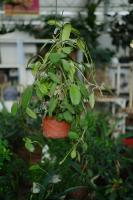Can You Use Chalk Paint on Plastic Plant Pots?
If you're someone who enjoys DIY projects and has a green thumb, you've probably considered painting your plastic plant pots. While there are many types of paint available, chalk paint has become increasingly popular due to its ability to adhere to a variety of surfaces, including plastic. In this article, we'll explore whether or not chalk paint is a viable option for revamping your plastic plant pots.
Understanding Chalk Paint
Chalk paint is a unique type of paint that has a matte, chalky finish. It is made by combining chalk or limestone with a binder, such as water, and pigment. This creates a thick, creamy texture that can be easily applied to surfaces without the need for sanding or priming. Chalk paint is ideal for repurposing furniture, but it can also be used on other surfaces such as glass, ceramic, and plastic.
Preparing Your Plastic Plant Pots
Before you begin painting your plastic plant pots with chalk paint, it's essential to prepare the surfaces properly. Start by cleaning the pots with soap and water to remove any dirt or residue. Rinse thoroughly and let them dry completely. If you're painting over an existing finish or color, you may need to sand the surface lightly to ensure better adhesion. Wipe away any dust or debris with a clean, dry cloth before proceeding.
Applying Chalk Paint to Plastic Plant Pots
Once your plastic plant pots are clean and dry, you can begin applying the chalk paint. To avoid brush strokes, use a foam brush or roller to apply the paint in thin, even coats. You'll likely need at least two coats to achieve full coverage, but wait for each coat to dry completely before applying the next. Once you're satisfied with the results, you can seal the paint with a clear wax or polyurethane finish to protect the surface from scratches or fading.
Caring for Your Painted Plastic Plant Pots
While chalk paint is known for its durability, it's essential to take care of your painted plastic plant pots to ensure they last long. Avoid using abrasive cleaners or scrubbing the surface too hard as this can cause scratches or wear down the paint. Instead, gently clean the pots with a soft, damp cloth, and avoid exposing them to extreme heat or cold. If you notice any chips or damage to the paint, you can touch up the areas with more chalk paint and sealant.
Conclusion
In conclusion, chalk paint is a suitable option for painting plastic plant pots. Its thick consistency and ability to adhere to almost any surface make it easy to use, and its matte finish can give your plant pots a unique and stylish look. However, it's essential to prepare the surfaces properly and take care of them after painting, so they last longer. With these tips in mind, you can transform your plain, plastic plant pots into decorative pieces that enhance your home or garden.

 how many times do yo...
how many times do yo... how many planted tre...
how many planted tre... how many pine trees ...
how many pine trees ... how many pecan trees...
how many pecan trees... how many plants comp...
how many plants comp... how many plants can ...
how many plants can ... how many plants and ...
how many plants and ... how many pepper plan...
how many pepper plan...
































